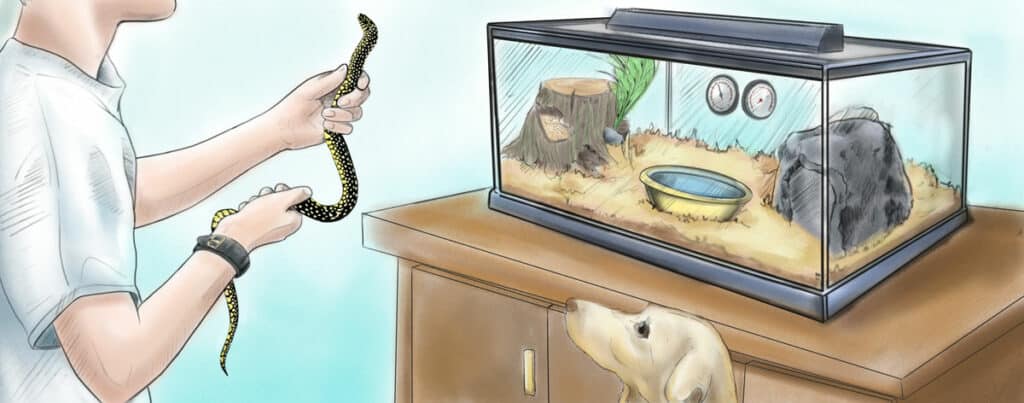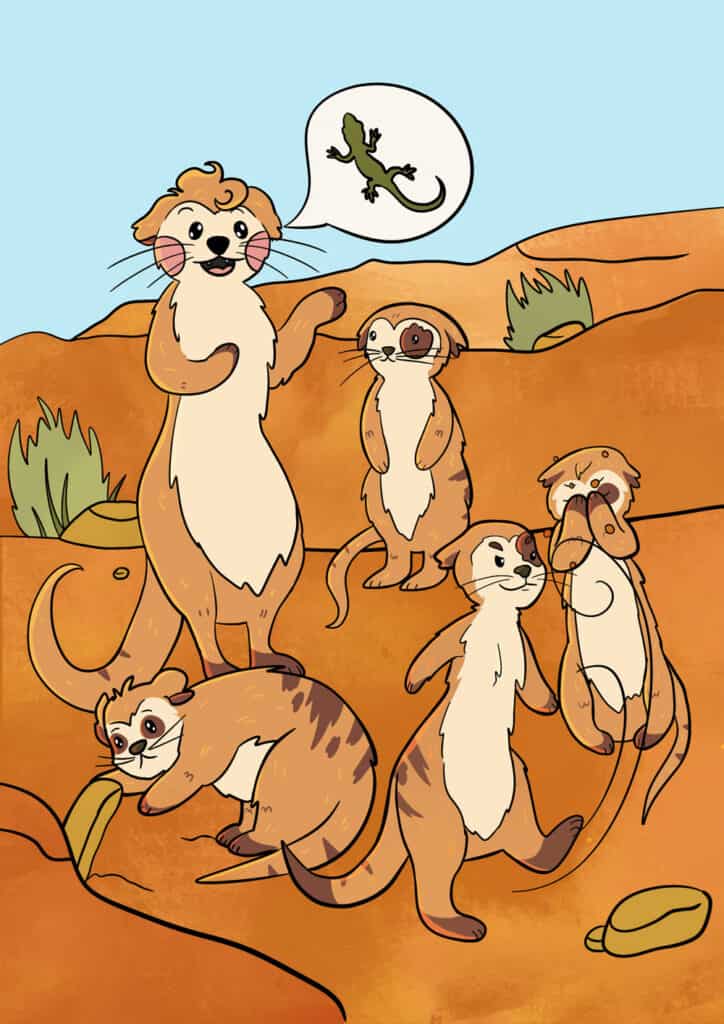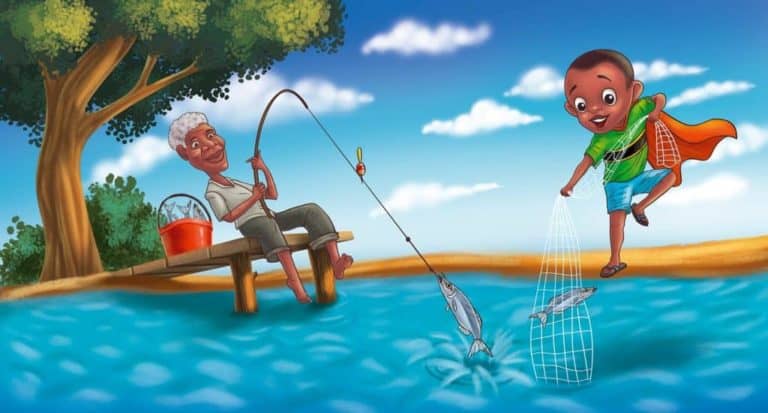Wonderful illustrations are essential for children’s books for younger age groups. They are just as important as the words. Book illustration is a specialised skill, and not all artists are book illustrators. A great illustrator should capture the spirit of the story and characters and make both come alive. It’s important to pay an illustrator fairly for their work, as they put a lot of time and effort into creating the perfect illustrations. But of course, when you are looking for an illustrator, it’s important to know: how much do you pay an illustrator for a children’s book?
Before we go into pricing, please know that picture books are important. We should create high-quality books because they are a child’s first introduction to books and reading and can set kids up for a life of literacy and learning. Picture books can introduce a child to new topics and help them discover things they may not see or experience first-hand. So making books delightful for young kids can help them for the rest of their life. Understandably, most authors want an affordable illustrator, but skimping on your illustrations budget will give you poor results. The cost of illustrations should not be the only factor when choosing an illustrator. Quality is really more important in the long run, since the illustrations will be an integral part of the book. That said, there are many talented and affordable children’s book illustrators for hire. If you know what you’re looking for and how to vet an illustrator, it becomes easier to find a great one and create a beautiful book.
Note: If you’ll work with a publishing house (i.e. you plan to publish traditionally), the publisher usually pays for the illustrations and design. If you plan on self-publishing, you’ll need to arrange for and pay for illustrations yourself, as well as interior and cover design. So if you’re self-publishing, keep reading! (Or if you’ll work with a publisher, but want to understand how all this works.)
So, how much do you pay an illustrator for a children’s book? Here are factors to consider:
- The brief
- Types of illustrations or drawing style
- Illustration details
- Illustration count
- Illustration sizing
- How many revisions
- Project deadline
- Flat rate or hourly
- Illustration permission
- Agency or private illustrator
Let’s have a better look at each of these.
The brief
Whether your children’s book is written already or not, it’s good to be prepared for the next steps like a mood board and illustrations. Invest time and careful planning in preparing and briefing your illustrator. Find out what you want and what you expect your illustrator to do for you. This will help you get the best book illustrations possible and can save you money, since you will avoid mistakes and extra work for the illustrator.
Mood boards
Mood boards are optional, but they are a great way to get a better idea of what you want. You can work out what your characters and book illustrations should look like. This can help you find a suitable illustrator and to provide them with an idea of your expectations. Your mood board can be quite specific and literal, e.g. showing characters’ features and scenery, or it can be more abstract, only showing the mood through colours and images that evoke certain emotions. Visit bookstores or libraries, look online, or even take photos to find inspiration. This will help you get an overall style and will be useful when briefing the artist. This can also help to define the budget for the project. Setting clear expectations, determining the scope of the project, and discussing the budget upfront will help to ensure that the end result is satisfactory for all parties involved.
Types of illustrations or drawing style
When it comes to finding the right illustrator for your book, drawing style is usually the first factor most authors consider. Whoever will illustrate your book should have a style that suits the story and your writing style. For instance, cartoon illustrations are usually fun and playful, whereas realistic illustrations are often more detailed and lifelike. Realistic illustrations are also good for showing nonfiction concepts realistically. Within these two broad categories (cartoon and realistic), there are many variations in style. For instance, cartoon drawings can be cute, childlike, whacky, funny, or even sentimental. This facet of drawing style (cute vs. funny, for instance) won’t always affect the budget. But how simple or complex and time-intensive the style is will usually affect the budget. For instance, drawings can be full-colour, line art, sketchy, highly stylized, highly detailed, or many other options. You can learn more about different types of illustrations for children’s books here.
Another major consideration is whether you’ll get digital or traditional illustrations. Digital illustrations are created using a computer and often combine traditional techniques like drawing and painting with modern technology, whereas traditional illustrations are made on paper and a computer isn’t involved. It’s important to note that digital illustrations are drawn by hand, just as traditional illustrations are, and can recreate any traditional appearance, from watercolour to gouache to pencil or ink. So while some digital illustrations look, well… digital, they can look very organic if that is what you want.
Digital book illustration is faster and easier, mainly because revisions are much easier to execute. In traditional art, revisions to the final artwork can be very challenging and sometimes the illustrator has to redraw the entire drawing. This is a big factor in pricing since it affects the time and effort the illustrator will put in.

Cartoon style illustration by GetYourBookIllustrations for Harlow Has A Hypothesis by Dr Kevin Boldt and Dr Kristen Barton

Realistic style illustration by GetYourBookIllustrations for Saving Schmiddy by Andi Lehman
Illustration details
The cost of your book illustrations can vary depending on the details and complexity of the illustrations. Book illustrations vary from project to project, regardless of drawing style. To determine the budget, the illustrator needs to consider the number of characters, the level of detail, and the number of scene changes. If the illustrator needs to illustrate multiple characters in a complex environment, then the cost of the project can increase. Illustrating a single character in a basic environment will require less time and cost less.
So, the number of elements to draw, combined with how detailed the drawing style is, plays a big role in how much work it will take, and thus in how much you’ll be paying.
Here are three examples that show varying amounts of detail and elements per illustration:

Illustration by GetYourBookIllustrations for Wendy the Woodpecker Wouldn’t Peck Wood by Papa Seiden

Illustration by GetYourBookIllustrations for Tum Tortoise Rights Himself by Gerrie Porcella Linek

Illustration by GetYourBookIllustrations for The Dragon’s Bridge by Simon Dorey
Illustration count
Illustration count is the other biggest factor in how much your children’s book illustrations will cost. First, you’ll need to work out how many spreads your text will need, as that determines how many spreads need to be illustrated.
Some illustrators will charge per page, and some will charge for the book as a whole.
You may need spot illustrations, half-page illustrations, single (full) page illustrations, or spread illustrations. Here is a description of these four types of illustrations used in children’s books:
- A spot illustration is a small, simple image, for instance, one character or object.
- A half-page illustration is a single image that takes up half of a page.
- A single-page illustration is a full-page image that covers the entire page.
- A spread illustration is a pair of images that span two pages.
Usually, a half-page illustration will contain fewer details and elements than a full page. If it contains a lot, the price may end up being the same as a full page because it’s the same amount of work, even if it is smaller. The cost of your book illustrations will depend on the number of illustrations required, and which types or sizes these illustrations need to be.

Spot illustration (by GetYourBookIllustrations for MacMillan Education)

Spot illustrations (by GetYourBookIllustrations for If I Had a Spaceship by Nanci Z.N. &T.R. Nelson)

Half-page illustration (by GetYourBookIllustrations for Deer-est Friend by Sienna Whaley)

Full-page illustration (by GetYourBookIllustrations for MacMillan Education)

Spread illustration (by GetYourBookIllustrations for If I Had a Spaceship by Nanci Z.N. &T.R. Nelson)
Work out how many illustrations are needed for your book, as this will help define the budget. Don’t forget to include the cover, because you’ll also need a cover illustration! Note that your illustrator can also help you plan the amount and types/sizes of illustrations, but it helps if you have an idea already when you approach them.
How many revisions
It is important to discuss how many rounds of revisions are included in the price before beginning the project. Also, find out what a round of revisions includes. Keep in mind that the illustrator may require multiple rounds of revisions before the final artwork is completed, which could add to the total cost of the project. If you communicate well from the start and set clear expectations, it should lessen the revisions.
Usually, illustrators will start with character sketches for you to approve before they colour them. Then they’ll do rough sketches of all the scenes in the book to ensure the layout works and that you’re happy with it. These steps are important, as they will help you minimise revision later on. Spend time in the beginning phase to ensure each illustration is what you want. Later changes can add unexpected costs because they are more work. For instance, if you want to change the main character’s outfit after the colour illustrations are done, the illustrator will need to redo some work. The same would be true if you want to change the layout of a scene after the colour is done. The same applies to rough and detailed sketches: if you approved the rough sketch’s layout, the illustrator will base the detailed sketch on that. So if you then want to change it, they may charge you extra. That’s why it’s important to collaborate and give feedback on each step of the book illustration process.
Project deadline
The timeline of the project can also affect the cost. More urgent projects are often more expensive, since the illustrator may need to work long hours to complete everything on time. Before agreeing on a price, discuss the project deadline with the illustrator and establish a timeline they can meet. It is important to factor in extra time for any changes the illustrator may need to make. Consider offering a bonus or other incentive if the illustrator can meet the deadline. As the project progresses, keep track of the progress, so that the illustrator knows how much time they have left to complete the project.
Our advice: plan ahead to avoid the stress and help create a fantastic end result.
Flat rate or hourly
Illustrators may charge an hourly rate, a flat rate per illustration, a page rate, or a book rate. Hourly rates usually range from $20-$45 per hour, while flat rates per illustration can range from $15-$600+. Working with an illustrator on a flat rate is safer since hourly rates are hard to predict and the bill could run up higher than expected.
Book Illustration sizing
Print books require larger images (higher resolution) than ebooks, and both require specific file types to print correctly. Print books require print-ready PDFs, while ebooks are usually epub files. When selecting an illustrator, make sure that they can provide the correct file types and sizes for the chosen book format, and that all the needed file types are included in the quote. This will ensure that the illustrations look their best and that readers will enjoy the illustrations in the book.
Illustration Permission
Ensure you have the rights to use the illustrations for paperback, hardback and ebook, special editions of the book, your website, promotion, merchandise, and other uses. We recommend a work-for-hire contract where, once you pay for the art, it is yours to use as you choose. Another good option is a contract that gives you full rights. You may need to negotiate a deal with the illustrator to cover all these rights and set the terms of its use. You want to make the most of the illustrations, so it’s best to discuss this with the illustrator and make sure that everything is covered. If your illustrator wants royalties, it’s up to you to decide if you’re okay with that. At GetYourBookIllustrations we do work-for-hire contracts because the author does the marketing. Illustrators hardly ever market, or even if they do, it’s extremely limited. So if an author works hard to sell thousands of copies (and spends money on ads, etc.), they should reap the rewards.
Regardless of your agreement, credit the illustrator for their work in the book and on the cover.
How to choose an illustrator
Look at numerous illustrators to find portfolios you like, then ask these illustrators for an estimate based on the brief you’ve worked out. Getting an estimate first is good because it may immediately eliminate some illustrators who are way out of your budget. You can then have a good chat (on any platform or via email) with those you may hire, asking questions, and seeing how they respond. Check if they understand you, answer your questions well, have a good response time and if you like chatting with them. Remember, just because they can draw doesn’t mean they’ll understand what you need, or that you’ll get along. It’s important to chat, even if you ask questions you already know the answers to.
Getting two to three paid sample illustrations can help you choose your illustrator. Give all the illustrators the same brief and see which one delivers the best illustration. Ask for a revision too, even if you’re happy with their first illustration, to see how they handle your request.
Private illustrator or illustration agency
When looking for an illustrator, you can choose between an agency and a private illustrator (usually called a freelancer). Both can offer good service, and both have pros and cons.
You can find freelance illustrators on platforms like Upwork, Bark and Fiverr. Freelance illustrators’ rates are usually lower than those of an illustration agency. However, freelance illustrators (especially the lower-priced ones) often have less experience and may not produce the high-quality illustrations you are looking for. It can also be harder to determine how professional a freelancer is, as they may have limited reviews or portfolio illustrations. Look closely at the illustrator’s portfolio and reviews and have a thorough conversation with them before hiring.
Always ask them for books they’ve illustrated and have a look at these books. Book illustration is a specialised skill and requires more than a knowledge of how to draw. The illustrator must also tell a story that flows from spread to spread, as well as have technical knowledge. We often see authors get stuck when they get to the interior design stage, because their illustrator created the illustrations in the wrong size. (In short, one needs to make the illustrations bigger than the final book for printing reasons.) Or the illustrator put crucial elements too close to the edge, or in the middle where the book gutter will be, or they leave no space for text. The same goes for the cover design. A designer can only create a strong cover if the illustrator created an illustration that will sell well and left enough space for the title, and space for the author’s and illustrator’s names.
You may also need more back-and-forth with a freelance illustrator to get what you want, guiding them. Sometimes artists don’t handle criticism well, so you may need to smooth things out with them or could get stuck struggling to get the revisions you want. Also, check for language barriers, as not all illustrators are fluent in English and this can cause some frustrations. Carefully vetting and chatting with your illustrator and getting a paid sample and asking for revisions before starting will help.
If you need high-quality illustrations for your children’s book, an illustration agency is the safer option. Agencies often charge more, but they have more experienced illustrators and access to a greater range of styles. They can also offer more services, like cover and interior design, so you don’t need to source a separate designer. So you’ll have an easier project that is less time-consuming, get high-quality illustrations and a more professional book. Please also understand not all agencies are equal. You still need to ensure they have high-quality illustrators (portfolios) and have a conversation to see if they are professional.
Here are GetYourBookIllustrations we have over 15 professional, hand-picked illustrators, all well-versed in all the requirements of creating beautiful book illustrations that also meet all the technical requirements. You’ll also work with a project manager, so communication between you and the illustrator will always be smooth, quality will be double-checked, and timelines are managed. Plus, we offer three rounds of revision on each step of the process, cover and interior design services, and even advise on the next steps like publishing. These are the benefits of working with an agency.
Pricing on platforms like Upwork, Bark and Fiverr
First off, we don’t recommend Fiverr, as many “illustrators” on there use clip art, simply copying and pasting different images to create scenes. This means your art won’t be original and will be visibly lower quality and incohesive. One can’t tell a story in a creative, high-quality way with copy-paste “illustrations”. Look through many of the cheapest Fiverr illustrator gigs and you’ll see the same images and characters in different portfolios. Paying less, but getting copy-paste art, is not worth it. While some illustrations on Fiverr start at $5, these are almost all clip art or one very simple character. You won’t ever get a full scene that is hand drawn for $5. In looking at many Fiverr gigs, almost any full scene starts at a minimum of $25, and then these illustrations are very simple. Unfortunately, many of them contain clip art in the background, so even at this price it’s not a good bet.
AI-generated art is also on the rise on Fiverr, meaning you once again won’t get original art and the “illustrator” isn’t illustrating your book at all, but a computer is. Your beautiful, original story deserves beautiful, original art. Learn more about the impact of AI for books in this article.
Upwork is better than Fiverr, and Bark is also okay. If you are going to use Fiverr, we recommend using only “pro services”. These are individuals verified as professionals (for quality and service) on Fiverr, and you can filter your search results to only show them.

The toggle to only show “pro services” on Fiverr.
So, how much do you pay an illustrator for a children’s book on one of these platforms? An average children’s picture book has 32 pages, with 14 spreads of illustrations. So we’ll base the pricing on this. Comparing these three platforms, the pricing for illustrations with backgrounds averages at around $1,800 for a book. In our experience, a good rate to pay for professional illustrations is about $2,500-$3,500. This will get you professional, high-quality illustrations and usually decent service too.
Agency pricing
The Graphic Artists Guild Handbook: Pricing and Ethical Guidelines provides the current industry rates. Per this guide, the flat fee for a children’s picture book is $3,500-25,000. I’ve seen rates from $1,000-$18,000. Rates can go higher than $25,000 for notorious illustrators with years in the industry. These illustrators also get paid royalties. Self-publishing authors will not usually hire an illustrator with such high rates.
As mentioned above, a good rate to pay for professional illustrations is about $2,500-$3,500. This pricing is on the low end for most agencies, and if you work with an agency that only charges $1,000, don’t expect amazing service or illustrations. Here at GetYourBookIllustrations you’ll pay one flat fee of $2,940 for 14 spread illustrations (a 32-page picture book’s full illustrations). A dedicated project manager (and peace of mind!) is included in this price. We also offer interior and cover design at reasonable prices.
Next steps
Hopefully, your question about how much you pay an illustrator for a children’s book has been answered! If you’d like to learn more about your next steps, have a look at this article: How to Publish a Picture Book.
Here at GetYourBookIllustrations, we love helping authors turn their dreams into reality. We understand how important high-quality illustrations are and we’re passionate about creating beautiful books your readers will love. Book a free consultation call to find out how we can help you bring your book to life.
We’d love to hear from you in the comments!
1. What did this article help you understand better about illustrations?
2. Is there anything else you’d love to learn about hiring a book illustrator?
FREE Webinar: How To Write A Picture Book Without Self-Doubt Or Procrastination, Even If You’ve Always Struggled To Turn Your Idea Into A Story.









This article provides a comprehensive guide for anyone venturing into the world of children’s book publishing. Understanding the intricate details of choosing and compensating an illustrator is vital, as they play a pivotal role in bringing a story to life, especially for younger audiences. I appreciate the emphasis on collaboration and setting clear expectations from the onset to ensure a harmonious working relationship. For budding authors, this piece is an invaluable resource.
Thank you, Norma!
thanks ❣️❣️❣️